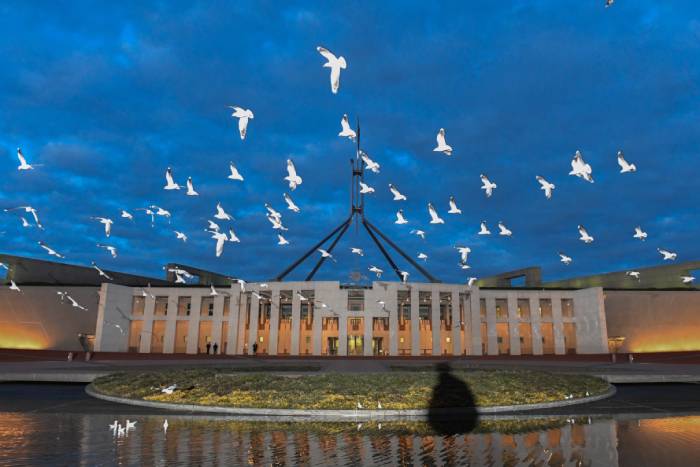Persistently high interest rates are having an outsized effect on the nation’s largest state economy, dragging consumer spending and home building.
The economic outlook comes as NSW increases its budget deficit to $5.0 billion amid sluggish home sales, insurance woes and a $440 million tax miscalculation.
Stamp take revenue – making up one-quarter of taxation revenue – was wound back $392 million.
Economic growth for the state, home to three in every 10 Australians, has been revised down to 0.75 per cent from two per cent forecast in June.

“Interest rates hurt all Australian families but they especially hurt NSW families because it’s more expensive to get a mortgage here,” Treasurer Daniel Mookhey said on Wednesday while outlining his half-year budget review.
“The NSW economy is showing a greater pullback in consumer spending as a result of higher interest rates than comparable jurisdictions.”
The slower-than-expected consumer spending coincides with elevated home construction costs and subdued demand.
Protracted troubles in the state insurance sector have meanwhile forced another writedown, this time of almost $1 billion.
More than 284,000 NSW employers and their 3.4 million employees are covered by iCare, which has faced long-term financial sustainability issues.
The treasurer said the “diabolically complicated” task of fixing the state’s schemes required an increased focus on prevention, particularly for psychological injury.
He played down the impact of increased public sector wages on the budget and inflation.
A $6.6 billion increase in spending on wages over four years – including $700 million for police – was fully offset, would add no additional debt and would not be inflationary, he said.
Yet that does not account for the $6 billion in outstanding wage claims from nurses, firefighters and train employees.
The escalating battle with rail workers erupted on Monday with a threat to disrupt New Year’s Eve services with extensive work bans.
Mr Mookhey said he was being prudent with expense growth and was managing risk.

But the state opposition said employee expenses were ballooning and rent-affecting land taxes were on the up.
“This government’s reliance on fantasy savings and magical offsets is gambling with the future of NSW,” Opposition Leader Mark Speakman said.
The treasury forecasts this year’s increased deficit will be offset by revenue uplifts in coming years.
Gross state debt is forecast to reach $199.9 billion by 2028, while the outlook for net debt has improved to $137 billion.
A stronger jobs market and real wages growth should lift payroll tax while NSW expects to claw back a sliver of the $12.6 billion in forecast GST payments taken away in March.
The update also accounts for Sydney Water’s acknowledgement that $440 million in deferred tax payments had been wrongly classified as current tax payments, changing revenue forecasts.
It comes after a June budget that was cast as one focused on “must-haves”, leaving few sweeteners for cash-strapped families.
NSW holds two triple-A credit ratings with Moody’s and Fitch.
The other major ratings agency, S&P, in November held its AA-plus ranking while downgrading the state’s outlook to negative over rising wage and the growing debt concerns.
HALF YEAR REVIEW FORECASTS FOR 2024/25
* budget result – $5.0 billion (previous forecast $3.6b)
* revenue – $118.6 billion (up $90 million)
* expenses – $123.6 billion (up $1.4 billion)
* real gross state product growth – 0.75 per cent (down from 2.0 per cent)
* employment growth – two per cent (up from one per cent)
* unemployment – 4.5 per cent (stable)



















